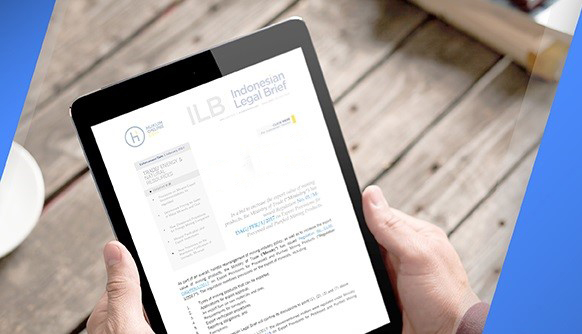
In 2000, the government issued Regulation of the Government No. 131 of 2000 on Income Tax (Pajak Penghasilan – “PPh”) on Time Deposits, Savings Interest and Discounts (Diskonto) for Bank Indonesia (“BI”) Certificates, as amended by Regulation of the Government No. 123 of 2015 (collectively referred to as “Regulation 131/2000”). Among the various provisions set out under Regulation 131/2000, this framework addressed the applicable rates of PPh that could be imposed upon interest on deposits, savings and discounts for BI certificates.[1]
However, in a bid to support the mandatory placement of foreign export proceeds (Devisa Hasil Ekspor – “DHE”) deriving from natural resources (Sumber Daya Alam – “SDA”) into the Indonesian financial system through the issuance of a special policy on PPh on placements of DHE SDA into certain monetary and/or financial instruments (collectively referred to as “Instruments”),[2] the government has decided to issue Regulation of the Government No. 22 of 2024 (“Regulation 22/2024”), which has been in force since 20 May 2024.[3] The enforcement of Regulation 22/2024 has subsequently resulted in the repeal and replacement of the aforementioned imposition of PPh upon interest on deposits, savings and discounts for BI certificates, as outlined under Article 2 of Regulation 131/2000.[4]
In this edition of Indonesian Legal Brief (“ILB”), we offer an analysis of the various new changes that have now been introduced under the framework of Regulation 22/2024, specifically as they relate to the following topics:
Expansion of Placement Instruments
At its core, Regulation 22/2024 states that any incomes that are received or obtained by exporters (either individuals or business entities) from the placement of DHE SDA into certain Instruments in Indonesia will be subject to the imposition of final PPh.[5] While said final PPh imposition has already been featured under Regulation 131/2000, the newer framework of Regulation 22/2024 has now clarified that said imposition will only be carried out in relation to DHE SDA, while eligible Instruments must fulfill the following criteria:[6]
While previously, Regulation 131/2000 only addressed interest on deposits, savings and discounts for BI certificates that were subject to the imposition of final PPh in relation to deposited DHE, Regulation 22/2024 has now expanded the list of such Instruments, which now breaks down follows:[7]
|
|
Adjusted PPh Rates and Placement Periods
Regulation 22/2024 states that final PPh for DHE SDA should be calculated by multiplying the final PPh rate by the relevant tax base.[8] In this regard, Regulation 22/2024 has further clarified that said final PPh should be settled through a tax withholding mechanism by certain parties (e.g. banks, LPEI and/or open-market operation participants) and completed during the payment of interest, discounts or other similar rewards by the bank or LPEI to exporters upon the placement of their DHE SDA.[9]
In terms of the applicable PPh rates themselves, Regulation 103/2000 previously stipulated that said rates were classified into three categories (i.e. Instruments in US dollars, rupiah or other currencies).[10] However, Regulation 22/2024 has now revised the applicable PPh rates and terms based on the currencies utilized through Instruments for the placement of DHE SDA, as summarized in the table below:[11]
| Applicable PPh Rates | Placement Periods | |
| Instruments in Foreign Currencies | Instruments in the Rupiah Currency | |
| 0% | More than six months | |
| 0% | Six or more than six months | |
| 2.5% | Six months | |
| 7.5% | 2.5% | Three to less than six months |
| 10% | 5% | Between one and less than three months |
It should also be noted that the above-outlined PPh rates also apply to replacement DHE SDA funds for Instruments after the due dates of said Instruments have elapsed.[12] Moreover, as with the previous framework of Regulation 103/2000, the basis for the imposition of PPh is the gross amount of income received by the relevant exporter from placements of the DHE SDA outlined above into Instruments.[13]
Key Takeaways
The expansion of the available DHE SDA placement instruments offers several notable benefits for Exporters, including the enhancement of their financial management flexibility, thus allowing them to tailor and diversify their investment portfolios more efficiently. In addition, the alignment of applicable PPh incentive rates with the most recent tax frameworks also demonstrates that the government is looking to ensure regulatory compliance, which should ultimately provide Exporters with a more favorable environment for their business operations.
Source: hukumonline.com



National Economy
Regional Economy
National Economy
Regional Economy